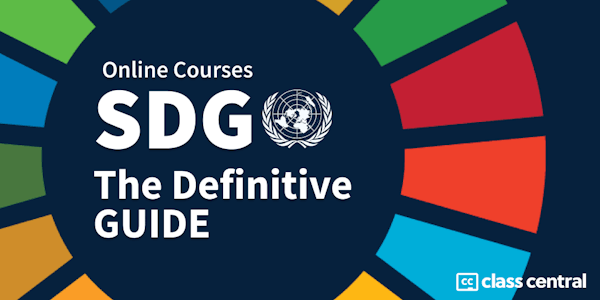Renewable Power and Electricity Systems
University of Colorado Boulder via Coursera
-
145
-
- Write review
Overview
Class Central Tips
The energy revolution in underway. Renewable energy is growing at an astounding pace - notably in electricity. Wind turbines and solar photovoltaic (PV) systems account for most new power plants built worldwide, and are essential to building a low-carbon and sustainable energy future. As a result, there are countless new opportunities in renewable electricity.
This course provides a solid grounding in the basics of renewable electricity. We'll start with how electricity is measured, how electricity systems operate, and how renewable technologies like wind turbines and solar PV work. We'll then cover technical and market fundamentals: how and why renewables are driving change in electricity systems worldwide, how electricity systems are changing to accommodate all these new renewables, and what that all means for those seeking to understand and participate in the global transformation of electricity systems. This global transformation is just beginning; with knowledge gained from this course you'll be ready to jump on board.
Course logo image credit: "Wind Turbine" icon courtesy of Vectors Point from the Noun Project.
Syllabus
- Introduction and Renewable Power Basics
- The first lesson provides an overview of the course. The second lesson explains how electricity is measured and defined, and then dives into the market and technical details of the two fastest-growing renewable electricity technologies: wind turbines and solar photovoltaic (PV).
- Grid Operations and Grid Integration
- Electricity systems - also called grids - must provide reliable electricity, all the time. This task is further challenged by the rapid growth in wind turbines and solar PV, which are subject to fluctuations in the wind and the sun. These lessons explain how electricity systems use different types of power plants to provide reliable electricity, and then explores the rapidly changing topic of ‘grid integration’ - how to integrate large amounts of new wind and solar PV while maintaining grid reliability.
- Storage and Demand Flexibility
- Two specific tools to ease grid integration of variable renewables stand out for their potential: Storage and demand flexibility. These lessons discuss how storage and demand flexibility work, describe their current status and limitations, and identify key opportunities.
- Power Structure Industry and ISOs
- Electricity systems’ institutional and regulatory structures are changing worldwide, and competition is playing a growing role in electricity generation. Why is this happening, and what does it mean for renewables? These lessons use case studies of Ghana, France, the UAE, and others to illustrate how the electricity industry is shifting, and discuss the growing role of Independent System Operators (ISOs) in grid operation and planning.
- Course Summary and Review
- Renewable electricity is growing at an astounding pace, and the electricity industry is shifting towards greater use of competition in electricity generation. These lessons pull all the course material together and show how the pieces fit together.
Taught by
Paul Komor




